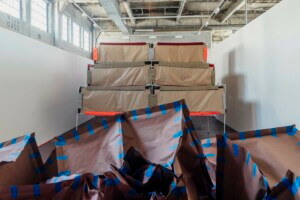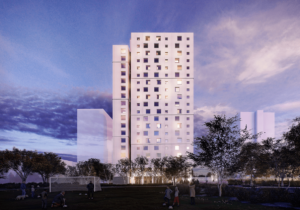New York–based design studio MOS Architects recently developed an experimental model of housing using only foam blocks. The pixelated structure, reminiscent of the sturdy ziggurats from ancient Mesopotamia, is not only cheap and environmentally friendly, but, according to the architects, it can also be constructed within a few days.
According to the firm’s traditional method of labeling, the Tetris-style prototype has been dubbed “House No. 12, A Foam House with 98 Blocks of Foam and 8 Doors.” MOS designed the structure specifically for low-income families who suffer from poverty and homelessness. By using expanded polystyrene (EPS) foam, a lightweight and easily maneuverable material that helps insulate the shelter, they were able to construct a house that is innovative, hyper-functional, and cost-effective.

EPS foam is typically used to insulate packages due to its compact yet lightweight structure. These material characteristics will provide a wide range of benefits to future homeowners, who can dwell within each unit fully protected from the outside elements. Once House No. 12 is built to full-size, its exterior will be coated with a rough cement and stucco finish, further protecting its soft, spongy center.

As the name suggests, House No. 12 features 98 foam blocks and eight different entryways. It also includes an open and flexible floor plan, equipped with a spacious kitchen, living area, and bedroom. According to the architects, the layout of the prototype was inspired by a ziggurat because throughout history ziggurats have been symbols of power, domination, and protection. The massive stone temples were known architecturally for their wide, protective bases and narrow, flat tops.
MOS Architects expects that once constructed in real life House No. 12 will bring hope to underserved communities who seek a safe place to live, while also representing a better way of life.











